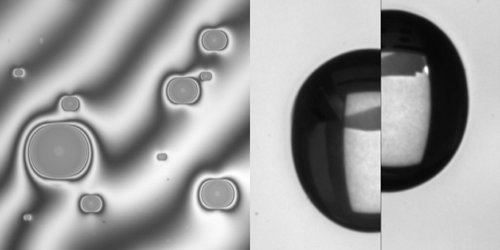April 27, 2021 report
Stretching a substrate provides a faster way to control anisotropic wetting

A team of researchers at ETH Zurich and the University of Twente has found that stretching a substrate provides a new and easier way to control anisotropic wetting. In their paper published in the journal Physical Review Letters, the group describes testing they conducted with drops sliding across a stretched surface.
For many years, engineers have used a variety of techniques to control anisotropic wetting, where the motion of very tiny liquid droplets used in microfluidic chips is directed using different approaches, such as by adding tiny pillars, bumps or channels. In this new effort, the researchers have found another way to control the motion of droplets—by stretching the wetted substrate.
The work involved studying how a very tiny drop of glycerol slides across different substrates. The substrate they eventually focused on was a thin sheet of silicone gel, which could be easily stretched.
In recording the action under a microscope, the researchers found that stretching the substrate by 23% resulted in the drop sliding down a slight incline faster than if it were not stretched. They also found that the drop slid significantly faster if it was moving in the direction of the material that was being stretched versus perpendicular to it. They also found that when the drop ceased its descent, its shape was elongated in the direction of the stretch, rather than round. The researchers note this last finding ran contrary to conventional theory.
Further research showed that the wetting ridge of a given drop during sliding was asymmetric, which also ran against conventional theory. The researchers also found that the degree of asymmetry was associated with the degree of stretching of the substrate. They suggest this indicates that the droplets became elongated on a stretched surface because of variations in ridge shape around its edges, which resulted in imbalances in the forces between the glycerol and silicone gel molecules. They conclude that stretching may provide a new way to control fluid in microfluidic chips and other applications. They also plan to continue their work, looking to find the limits involved with stretching substrates.
More information: Katrina Smith-Mannschott et al. Droplets Sit and Slide Anisotropically on Soft, Stretched Substrates, Physical Review Letters (2021). DOI: 10.1103/PhysRevLett.126.158004
Journal information: Physical Review Letters
© 2021 Science X Network





















